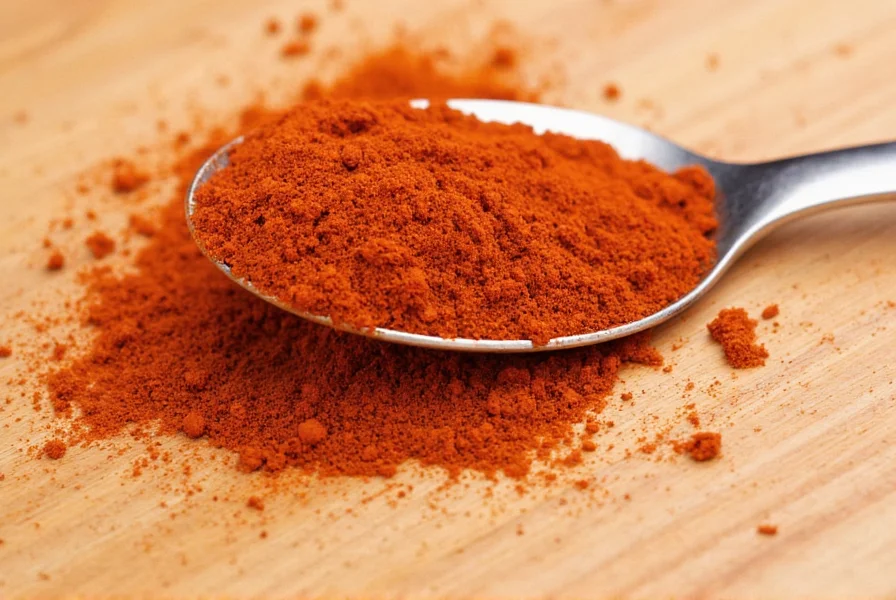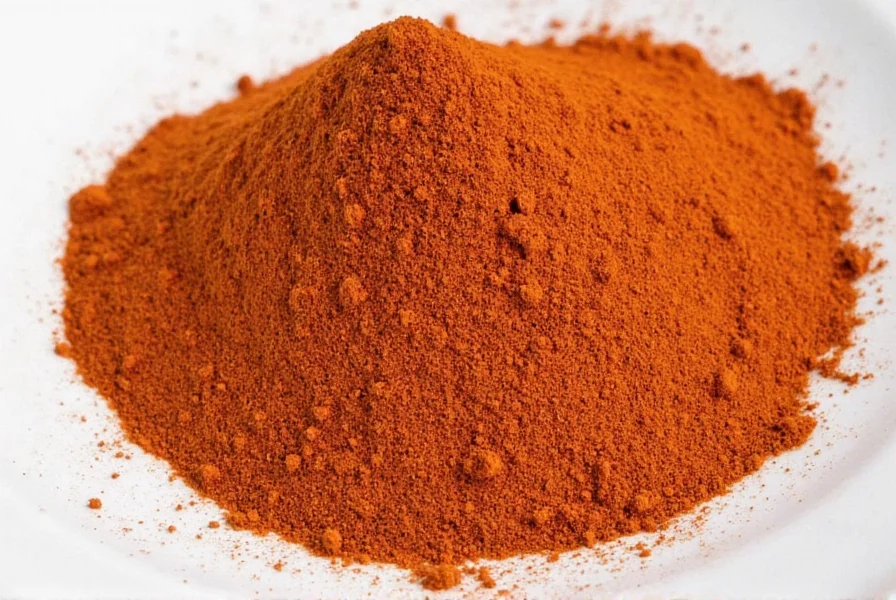Annatto, also known as achiote powder, is a natural spice derived from the seeds of the Bixa orellana plant, widely used in Latin American and Caribbean cuisines for its vibrant red-orange color and subtle earthy flavor. This comprehensive guide covers everything you need to know about annatto, including its culinary applications, substitutes, health benefits, buying tips, and frequently asked questions.
| Spice | Flavor Profile | Color Contribution | Common Uses | Best For |
|---|---|---|---|---|
| Annatto | Earthy, nutty, slightly peppery | Reddish-orange | Cochinita pibil, rice dishes, meat rubs | Adding color and subtle flavor without heat |
| Paprika | Mild, sweet, smoky (depending on type) | Reddish | Goulash, deviled eggs, potato salad | Smoky depth without spice |
| Cumin | Earthy, warm, slightly bitter | Light brown | Tacos, chili, curries | Stronger savory dishes |
| Turmeric | Earthy, musky | Bright yellow | Curries, rice, smoothies | Natural coloring and anti-inflammatory boost |
| Chili Powder | Varies, usually spicy-hot | Red | Enchiladas, tacos, hot sauces | Heat lovers |
What Exactly is Annatto (Achiote Powder)?

Annatto comes from the seeds of the Bixa orellana plant, native to tropical regions of the Americas. Indigenous cultures have used it for centuries not only in cooking but also as a natural dye and traditional medicine.
The seeds are sun-dried and ground into powder (achiote powder), delivering a reddish-orange hue with mild, nutty, and slightly peppery notes. Unlike chili powders or cumin, annatto provides color and subtle flavor without significant heat.
Flavor Profile & Culinary Uses
- Flavor Notes: Earthy, nutty, slightly peppery, with a hint of sweetness
- Mouthfeel: Light, not overpowering
- Aroma: Woody and floral
Popular Culinary Applications
- Recado Rojo (Mexico): Base for cochinita pibil, combining annatto, vinegar, garlic, and spices.
- Rice Dishes: Used in paella and arroz con pollo for golden-orange color.
- Stews and Soups: Adds color and subtle flavor to Caribbean callaloo or Latin American soups.
- Meat Rubs: Combined with citrus and herbs for aromatic marinades.
Buying Guide: How to Choose the Best Achiote Powder

Key Features to Look For:
- Ingredients: 100% annatto seeds, no fillers or additives.
- Color: Rich red-orange hue; avoid dull or neon shades.
- Origin: Latin American sources (Mexico or Peru preferred for authenticity).
- Packaging: Airtight containers to protect from moisture and light.
Top Achiote Powder Products
| Product Name | Features | Advantages | Use Cases | Target Audience | Suitable Occasions |
|---|---|---|---|---|---|
| La Costeña Achiote Paste | Paste form, blends annatto with vinegar, garlic, and spices | Ready to use, adds instant depth | Cochinita pibil, grilled chicken | Intermediate home cooks, chefs | Weekend meal prep, taco nights |
| El Mexicano Annatto Powder | 100% pure annatto, finely ground | Easy to blend into marinades or rice | DIY recado rojo, saffron alternatives | Home cooks experimenting with Latin flavors | Quick weekday meals, rice dishes |
| Dona Maria Achiote Mix | Pre-mixed seasoning with coriander, oregano, cloves | No extra ingredients needed | Roasted meats, stews | Busy cooks looking for convenience | Family dinners, potlucks |
| Organic Annatto Powder (Amazon Elements) | USDA certified organic, gluten-free | Health-conscious choice | Vegetarian dishes, grain bowls | Vegans, health-focused eaters | Lunch prep, healthy cooking |
5 Practical Tips for Using Achiote in Your Kitchen
- Create a Flavorful Base: Toast the powder lightly in oil before adding other ingredients to unlock its full aroma.
- Blend It Into Pastes: Combine with garlic, citrus juice, vinegar, and spices for versatile marinades or rubs.
- Add to Rice or Grains: Just a teaspoon can turn plain sides into visually stunning dishes.
- Don't Overdo It: A little goes a long way—start small and adjust to taste.
- Store It Right: Keep in an airtight container away from heat and light to preserve color and flavor.
Bonus Tip: Use It in Unexpected Ways
- Homemade tortilla chips with a hint of annatto for color pop
- Butter or mayonnaise tinted with annatto for sandwich spreads
- Natural food coloring alternative in creamy sauces
Frequently Asked Questions About Annatto (Achiote Powder)
What's the difference between annatto and achiote powder?
Annatto and achiote powder are the same ingredient. "Annatto" is the English term for the seeds of the Bixa orellana plant, while "achiote" is the Spanish term commonly used in Latin American cuisine. When ground into powder, it's labeled as either "annatto powder" or "achiote powder" depending on regional preferences.
Does annatto have any heat like chili peppers?
No, annatto is not spicy. It lacks capsaicin (the compound that makes chilies hot) and provides only subtle earthy, nutty flavor without heat. This makes it ideal for adding vibrant color to dishes without increasing spiciness.
What can I use as a substitute for annatto?
For color only: Paprika (for red), turmeric (for yellow), or a mix of both. For flavor and color: A blend of paprika, a pinch of cumin, and a tiny bit of saffron (expensive but effective). Note that no substitute perfectly replicates annatto's unique combination of mild flavor and vibrant red-orange color.
Why is annatto used in cheese and other commercial foods?
Annatto is widely used as a natural food coloring in cheeses (like cheddar and Colby), butter, and other products because it provides consistent, appealing yellow-to-orange-red color without altering flavor significantly. The U.S. Food and Drug Administration (FDA) recognizes it as Generally Recognized As Safe (GRAS), making it a preferred natural alternative to artificial dyes.
How do I make traditional achiote paste at home?
To make authentic achiote paste: 1. Toast 3 tablespoons of achiote powder in 1/2 cup of oil (sesame or olive oil) over low heat for 2-3 minutes 2. Remove from heat and stir in 4 minced garlic cloves 3. Add 1 teaspoon each of dried oregano and cumin, plus 1/2 teaspoon each of black pepper and salt 4. Let cool, then blend until smooth 5. Store in a jar in the refrigerator for up to 2 weeks This paste is perfect for marinating meats for dishes like cochinita pibil or as a base for rice dishes.
Are there any health benefits or concerns with annatto?
Annatto contains antioxidants like bixin and norbixin, which studies (e.g., published in the Journal of Agricultural and Food Chemistry) suggest may have anti-inflammatory properties. The FDA recognizes annatto as GRAS for food coloring use. While generally safe for culinary amounts, rare allergic reactions have been reported. Consult a healthcare professional for medical advice.
Conclusion

If you're looking to bring more color, warmth, and authenticity to your kitchen, annatto—or achiote powder—is your new best friend. Whether you're a seasoned cook or a weekend chef exploring international flavors, this humble spice deserves a spot in your pantry.
From its historical roots to modern-day culinary uses, annatto bridges flavor and aesthetics beautifully. And with our comprehensive guide, you're well on your way to using it like a pro. So next time you see those tiny red-orange seeds or that vibrant powder on the shelf, don't walk—RUN to the checkout.










 浙公网安备
33010002000092号
浙公网安备
33010002000092号 浙B2-20120091-4
浙B2-20120091-4